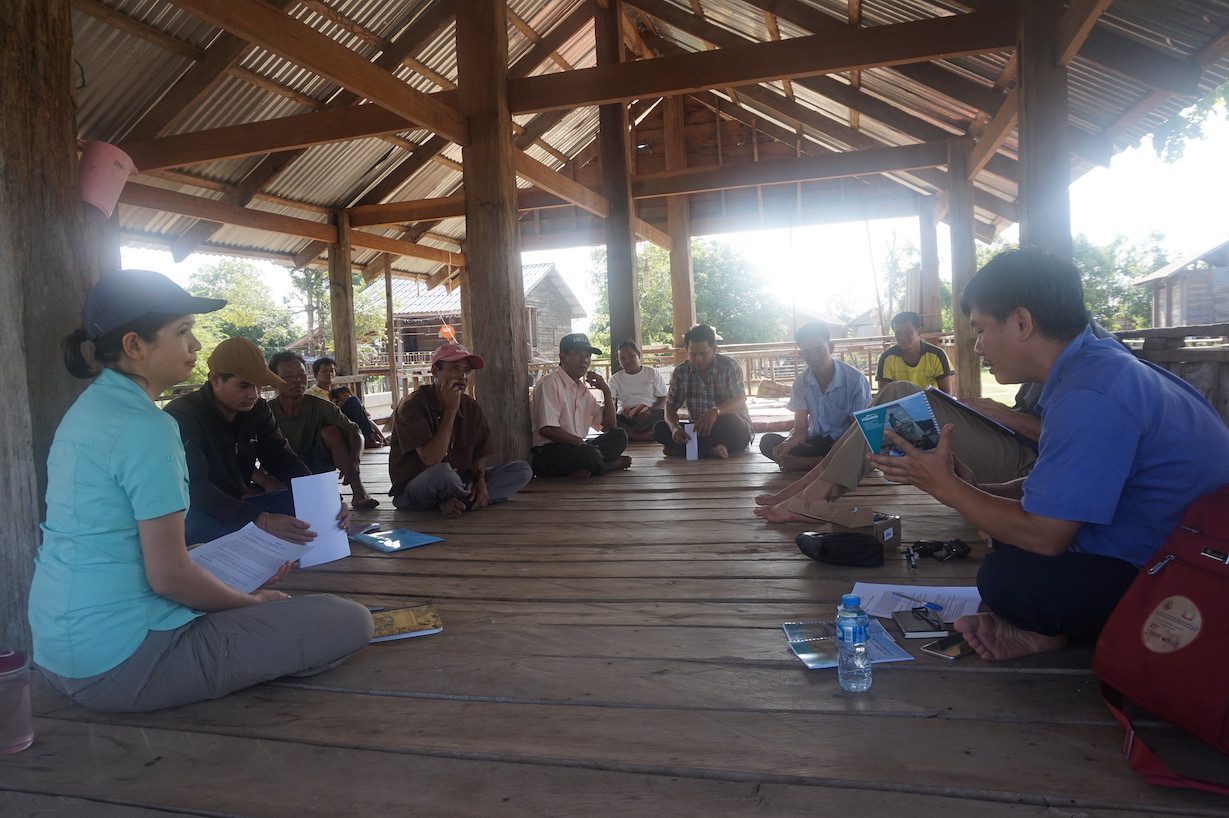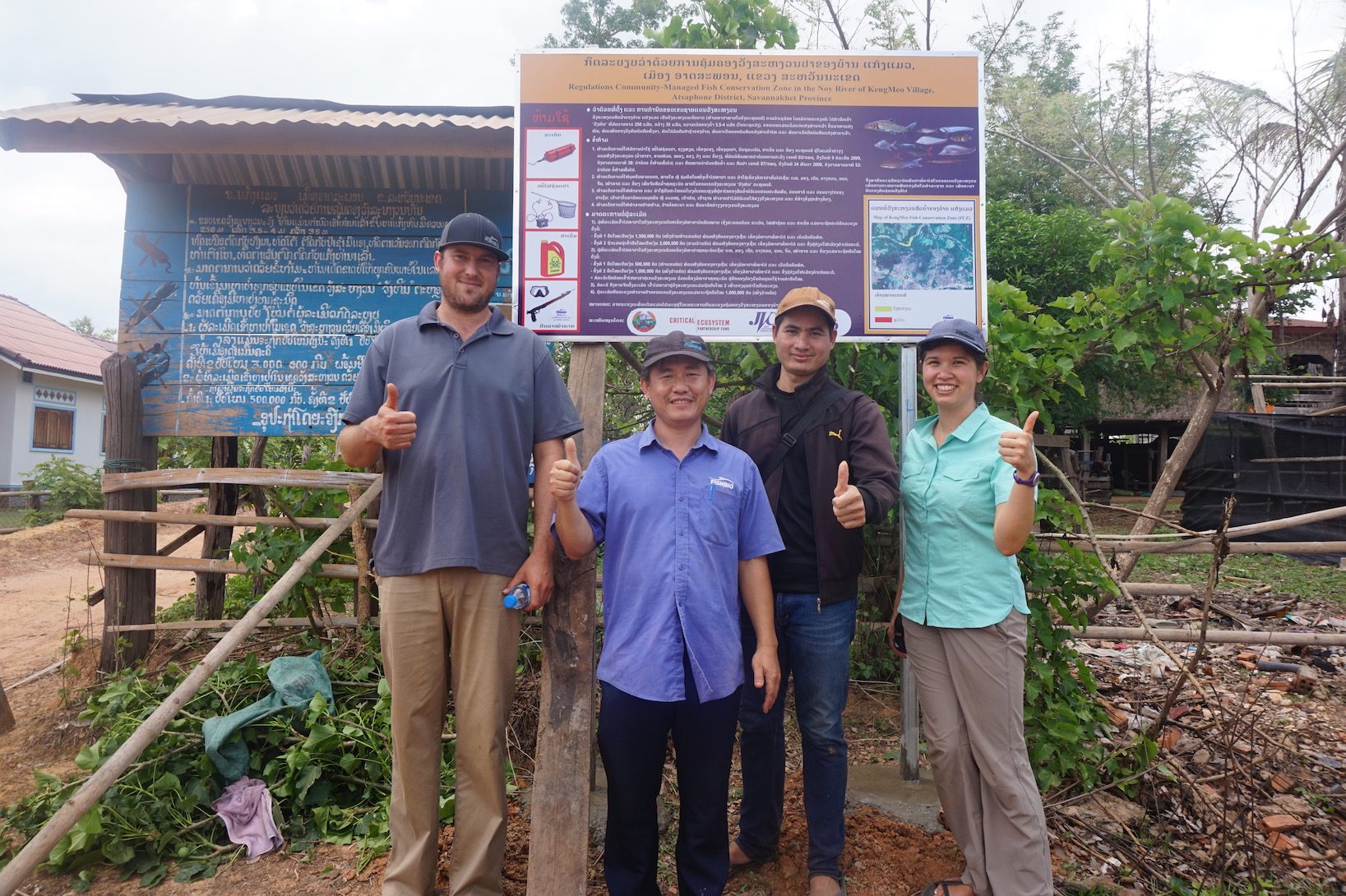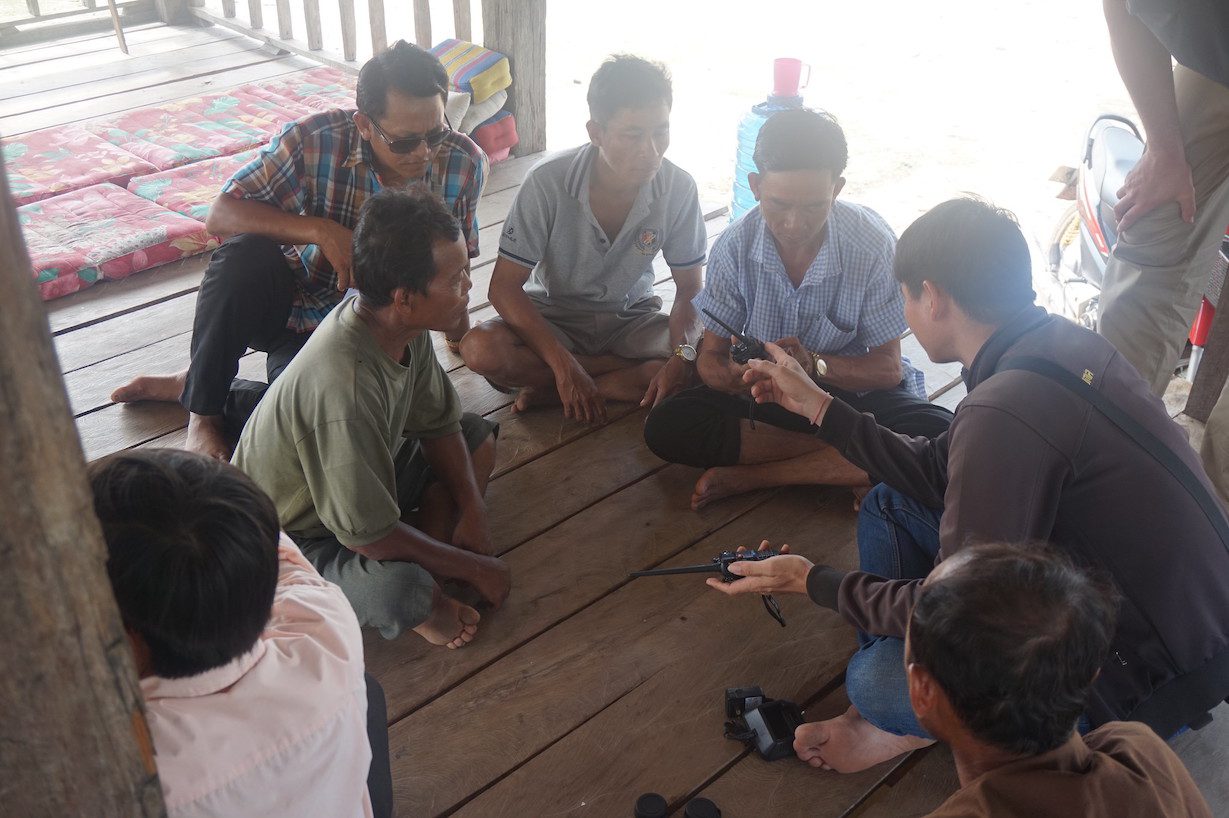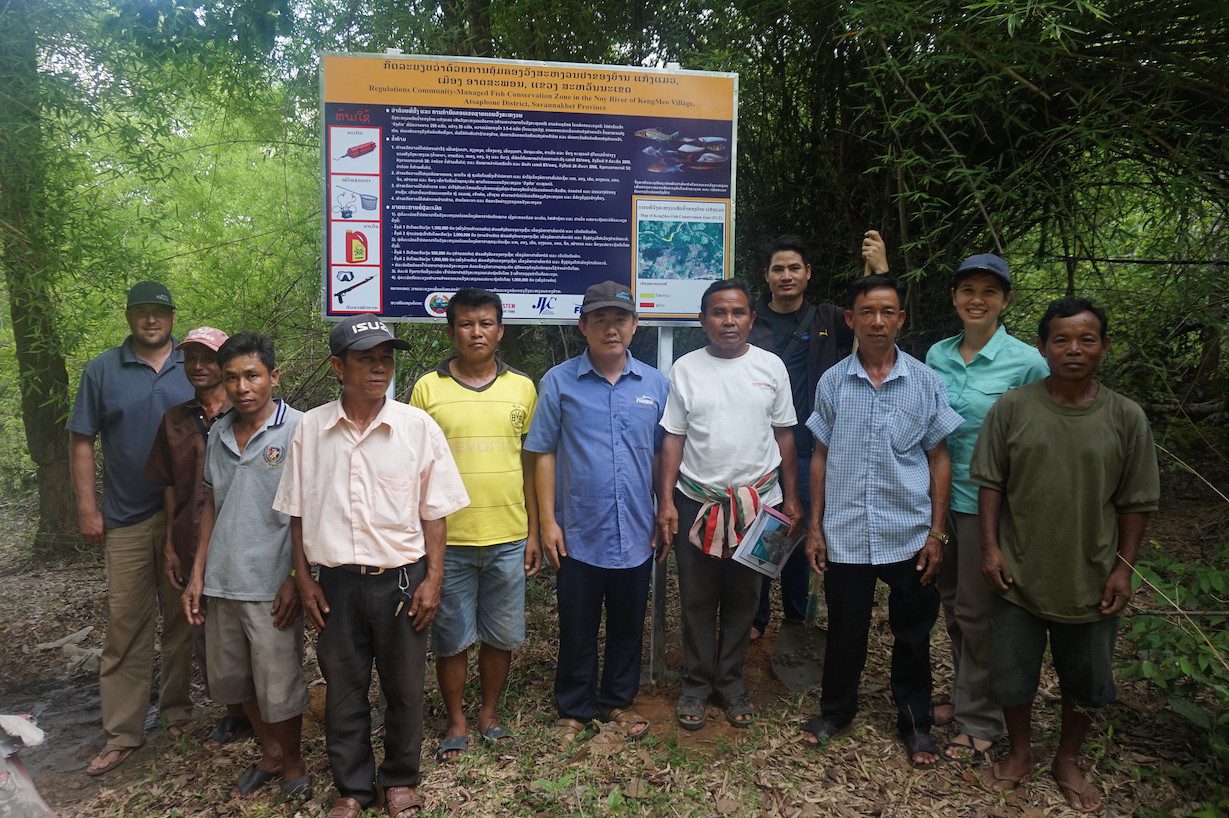Wednesday August 21, 2019

The remote village of Kengmeaw in central Laos may be located hours away from any major city, without access to many resources, but villagers there have still managed to sustain a successful model of a Fish Conservation Zone (FCZ), or a freshwater protected area closed to fishing. This village of some 750 people sits at the northern border of Savannakhet Province near Xenamnoy Stream. Since 2008, the villagers of Kegnmeaw have patrolled an FCZ in this river, less than a hectare in size, to prevent fishing in the location. The Kengmeaw FCZ served as one of the field sites for pilot testing the FCZ assessment guidebook that FISHBIO recently published with support from the Critical Ecosystem Partnership Fund. We learned about the village through our contacts with the Japanese International Volunteer Center (JVC), which has undertaken many rural development projects in central and southern Laos, including helping Kengmeaw and several neighboring villages set up FCZs. The goal of our project was to see whether the Kengmeaw FCZ was still functioning some ten years later, and what factors contribute to its successes or challenges.

The road to Kengmeaw is bumpy and rutted, making for a bone-jarring truck ride lasting three to four hours from Route 13, the main highway in Laos. Our team has made this trek four times over the last three years to consult with the villagers about participating in the project, to select indicators of FCZ effectiveness to be measured during the guidebook pilot testing, to collect data to measure those indicators as part of an FCZ assessment, and most recently to share the results with the community. As part of the FCZ assessment, we conducted surveys to interview the villagers and village leaders about the socioeconomic and governance effectiveness of the FCZ, as well as a gill net fisheries survey to measure ecological effectiveness.

Our assessment found that villagers generally thought the FCZ was working to increase fish populations and sizes, although they also said they did not necessarily see this reflected in their fish catches. Our team only conducted one gill net sampling survey as part of the assessment, but we did find larger fish inside the FCZ than outside. Perhaps most significantly, we found that the village had a good track record for enforcing the regulations of the FCZ, having apprehended four people who have broken the rules of the FCZ since 2010. Each violator was fined 500,000 Lao Kip, a bit less than $60. The most recent offender was someone from outside the village who claimed to have not seen the FCZ sign. To help the community replace their aging and faded FCZ signs, we designed and purchased new metal signs to display the FCZ regulations and mark the boundaries, and brought the signs to install during our final visit to the village.

During our final community visit in May of 2019, the villagers told us that JVC helped establish about 10 FCZs along Xenamnoy Stream in 2008, but the Kengmeaw FCZ is now the only one that is still regularly functioning. When we asked the village committee why they thought their FCZ had succeeded where others had failed, they replied that the most important factor is having strong leadership in the village, particularly involving elders in leadership decisions. When villagers respect and follow the decisions of the village committee, they said, then everything from Fish Conservation Zones to temple construction can function properly.

After sharing the results of the FCZ assessment, we showed the enforcement team how to use some equipment we had brought to assist their patrols, including binoculars and a set of walkie-talkies. Then we followed a group of villagers down to the FCZ site carrying buckets of rocks and cement, which were mixed with water to create bases for installing the new signs. A few villagers transported a few of the signs across the river, and before long the FCZ had a new set of brand new markers on both banks of the river. After a lunch party of roast pork and sticky rice, our staff made a small donation to support the remodeling of the village temple, and we loaded back into the FISHBIO truck for a jostling, bumpy ride back. The village chief soon sent us a picture to show where they had painted “FISHBIO” on the temple’s donor wall. The visit was a unique reminder that even a remote village without many resources can, given the right conditions, be a conservation success story. Their experience also stresses the importance of strong local leadership for achieving conservation outcomes, something other communities can learn from.
